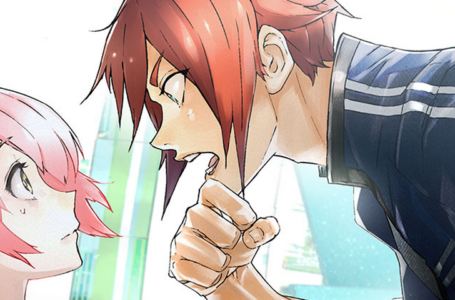AI: The Somnium Files – Nirvana Initiative improves on an already spectacular game
As we’ve hopefully established already by this point, AI: The Somnium Files is an amazing game that you should make some time for immediately if you enjoy story-centric games. And, once you’ve beaten it, you should then move immediately on to the sequel AI: The Somnium Files – Nirvana Initiative. Because while it’s not necessary to play the first before the second — thanks primarily to an excellent feature where the game deliberately omits spoilers if you tell it you’re new to the series — you will most certainly get more out of the experience if you do.
That’s what I did, anyway. And believe me when I say I did not want to leave these characters behind or step out of their strange and terrifying little world once the credits rolled for the last time. This is, without a doubt, one of Uchikoshi’s finest works, and today we’re going to explore why — once again, with minimal spoilers for the sake of those yet to play it.
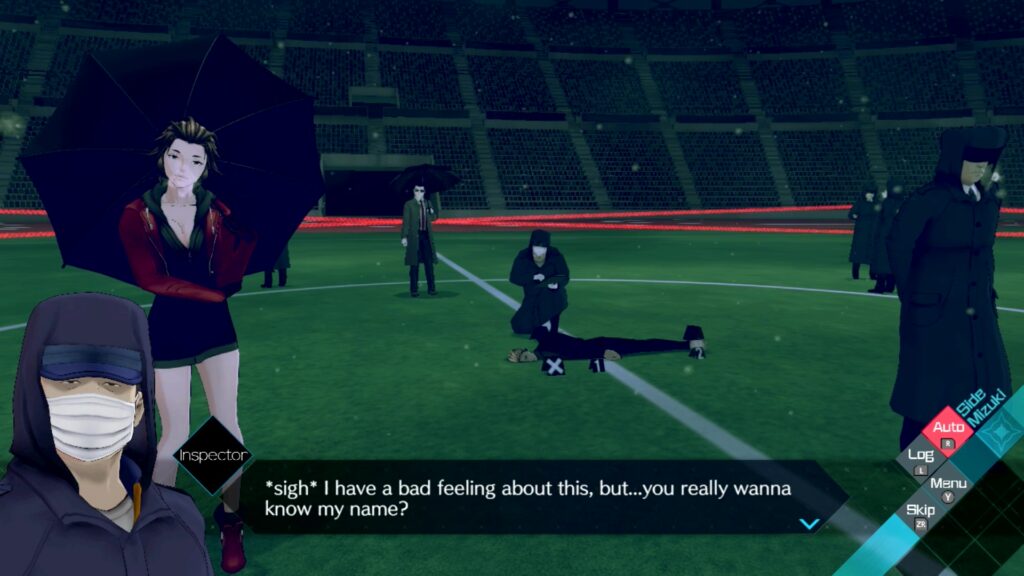
In AI: The Somnium Files: Nirvana Initiative, we’re initially presented with a situation that is unfolding six years after the previous game. The superhumanly strong Mizuki has grown up into an officer of ABIS, just like her guardian (and the previous game’s protagonist) Date, and we join her as she’s presented with a rather unusual situation: a body has been discovered at the local stadium, but only half of it is there.
On top of that, there’s no sign of how it got there, and the exceedingly neat, molecular-level cut down the middle makes the method of murder a complete mystery. Also, the other half of the body was already found… six years ago.
What then follows is something of a dual-pronged narrative, where we follow along with both Mizuki as she investigates things in the “present”, and a new character named Ryuki as he investigates what become known as the “half-body” or “HB” murders six years in the past. Practically speaking, the structure of AI: The Somnium Files – Nirvana Initiative ensures that you’ll end up exploring Ryuki’s routes first, then Mizuki’s afterwards.
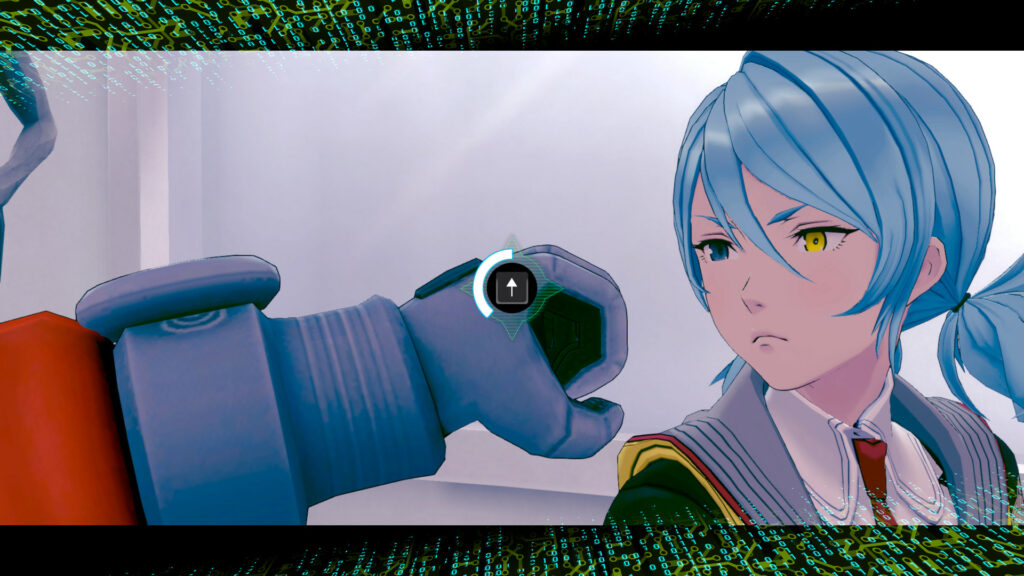
While it is possible to “sequence break” AI: The Somnium Files – Nirvana Initiative with the appropriate foreknowledge, Mizuki’s route is technically locked if you’re going in blind (as you absolutely should) until you acquire two very specific pieces of information in Ryuki’s routes, which you then have to return to an earlier story beat and input manually in order to proceed. There are a couple of other instances like this throughout the game, so for the first time in many years, this is genuinely an adventure game where you will probably want to have some means of taking notes to hand while you play.
And, with AI: The Somnium Files – Nirvana Initiative being an Uchikoshi game, things get even more complicated from thereon, but we won’t spoil things further on that front for now. Needless to say, there’s a bit of a brain-frying moment in the latter half of the game — but stop to think about things and they do make sense, even if it might initially appear to be nonsense.
Like the first game, AI: The Somnium Files – Nirvana Initiative is a great example of futuristic noir. While the game eschews many of the stereotypes of the noir genre such as featuring “hard-boiled” protagonists — both Ryuki and Mizuki are pretty fresh-faced and youthful — there’s a definite, palpable sense of darkness shrouding the whole thing, where it feels genuinely difficult for anyone involved in the narrative to truly catch a break and be happy.
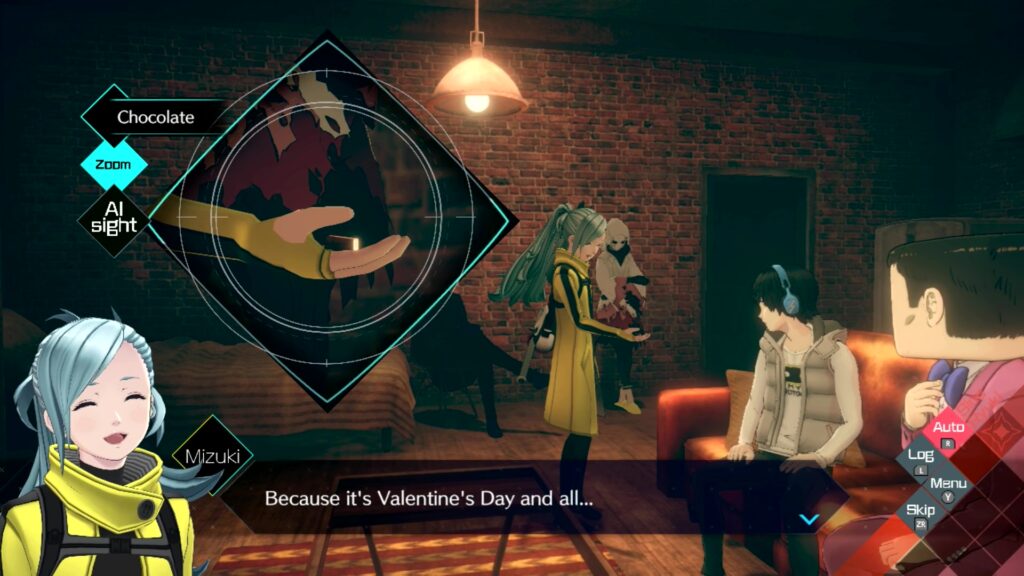
In some instances, the reasons for a character’s unhappiness are not readily apparent until later in the narrative; in others, they’re clear right away. In all of these cases, it’s easy to empathise and sympathise with the characters involved, because they’re all so well-realised and likeable. At the same time, it’s nice to see that some recurring characters from the previous AI: The Somnium Files genuinely seem to have managed to get their shit together somewhat since their previous appearances — particularly during the “six years later” sequences.
Mizuki, once again, is an excellent character, blending a certain amount of humbleness with regard to her superhuman strength — which is actually explained this time around — with a pleasing sense of self-assuredness. It’s clear that she partly picked up on this from living with Date since the previous game, but at the same time she also had to develop her own independent characteristics for when she found herself having to go against Date in one way or another — usually with regard to his less salubrious habits. The result is a strong protagonist with whom it’s a pleasure to “ride along” during her side of the story.
Ryuki initially seems like a bit of a wet lettuce in comparison, though in some respects this is simply him falling more in line with a traditional Uchikoshi protagonist by having less strongly defined traits. He’s no blank slate, mind, and a significant portion of the game involves uncovering some of the more mysterious things about him — as well as explaining his increasingly erratic-seeming behaviour once you get into Mizuki’s side of the story. Is it simply trauma from handling the case six years ago — or is it something more complex?
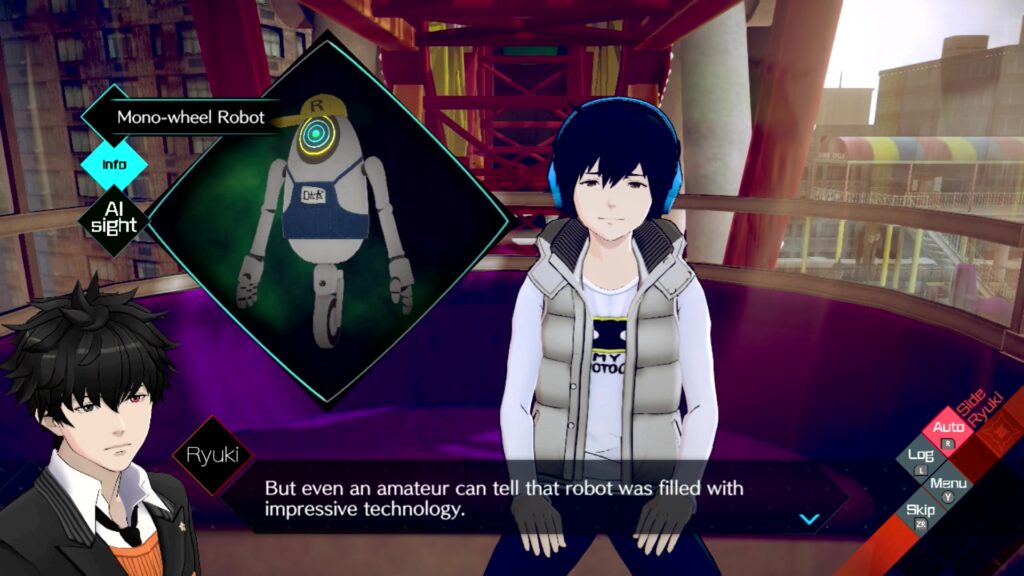
Ryuki also has the perfect foil in the form of his AI-ball Tama, who, like Aiba from the first game, occupies his left eyeball and often comments on the situation. Like Aiba, she’s an incredibly strong personality in her own right, but with her own particular tastes and tendencies — most notably an absolutely filthy mind that would probably make her a better fit for Date. She’s an absolute delight to be around, though — and her juxtaposition with Ryuki’s fairly strait-laced nature makes her work even better as a character.
The narrative of AI: The Somnium Files – Nirvana Initiative deals with a variety of themes along the way, even while the “HB” case investigations are proceeding. Similar to the first game, there is quite a strong focus on dealing with trauma or learning how to cope with inescapable, undeniable truths, and the narrative arcs which some characters embody are by turns surprising, heartbreaking and inspirational.
Of particular note in this regard is new heroine Kizuna, who initially appears appears to be a twist on Iris’ formula from the original game in that she is a cute 18 year old with a penchant for performing — in this case, dancing. Her attitude is markedly different to Iris, however; her refined way of speaking (she’s all hime-style “watakushi” and “desu wa” in the Japanese script) and modesty about her undoubted talents make it clear that we’re dealing with a very different sort of character.
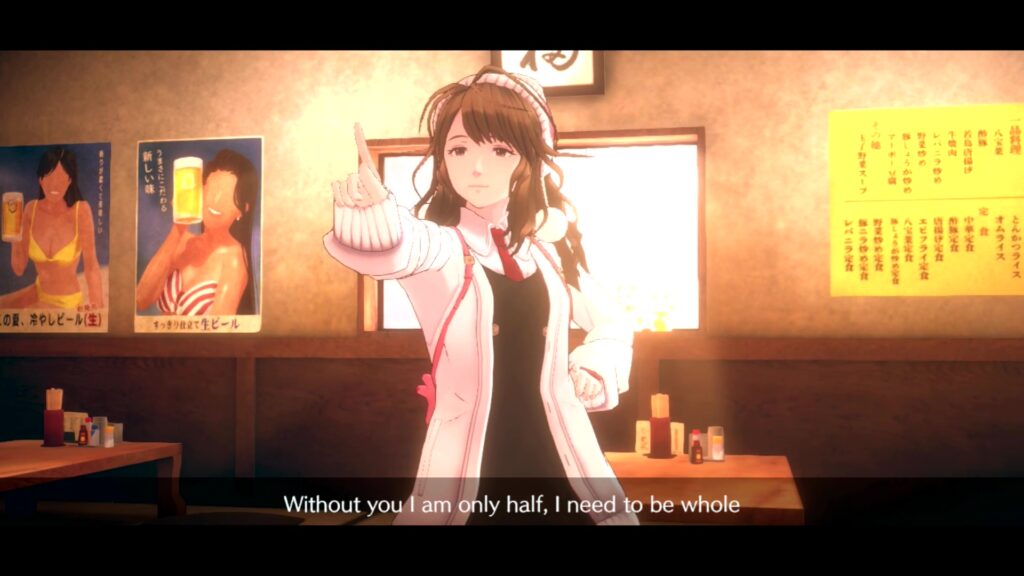
Alongside her, we also have Lien, a real highlight from the male side of the cast, who treads a fine line between being creepy stalker and fated Prince Charming to Kizuna. He undergoes plenty of his own personal growth over the course of the narrative as a whole — and despite initially appearing to be a bit of a random addition to the cast, ends up having a surprising amount of relevance.
A particularly pleasing aspect is how a minor character from the original game — the previously anonymous “Mermaid” from nautical-themed maid café Sunfish Pocket (an anagram of Spike Chunsoft, fact fans) — has a much more major role in AI: The Somnium Files – Nirvana Initiative. We learn that she’s named Amame — or more commonly simply Mame-chan or Mame — and discover that she is one half of one of the most wholesome relationships in the entire game.
That other half is one of several deliberately uncanny characters in the game. Gen is a huge, hulking brute of a man wearing a mildly terrifying mascot mask at all times — supposedly because his visage is so hideous that he doesn’t want to scare people with it. Gen is also one of the most gentle souls you’ll ever encounter, running a restaurant serving worldwide cuisine and often acting as a supportive ear for anyone who wishes to share their troubles.
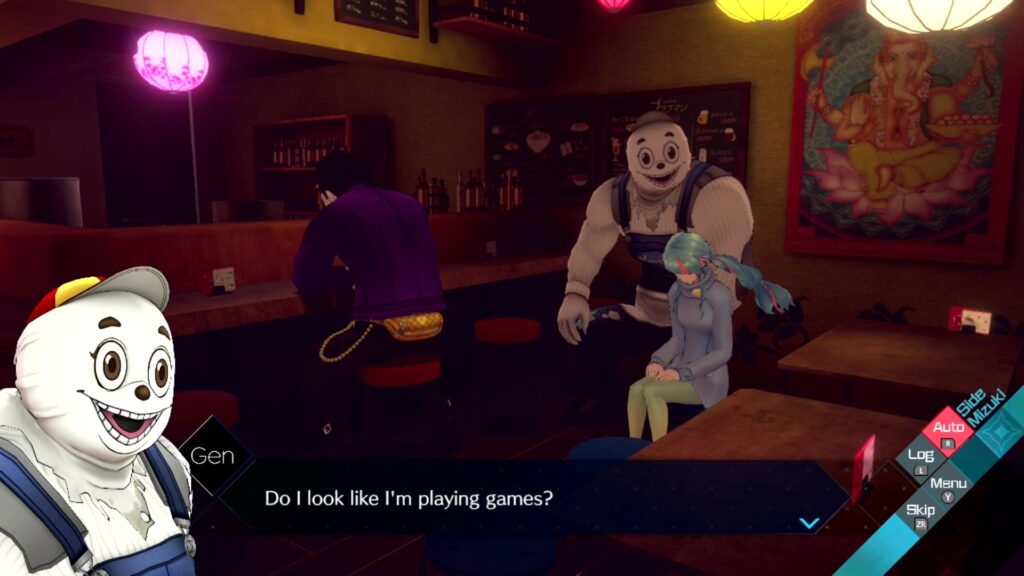
Gen is enigmatic, for sure, but it’s not long before you learn to completely look past his peculiar appearance and learn to love this gentle giant of a man. Even at the few times in the narrative where he finds himself involved in more questionable activities, he tends to have the best interests of the people he cares about at heart. There are some genuinely tense moments where Mizuki in particular is forced to confront this lovely man whom she considers a friend and contemplate whether he may have done something she might have to punish him for.
Then there’s father-son pairing of Komeji and his son Shoma. Komeji is another uncanny character, featuring a Minecraft-style cubic head that is never directly explained at any point in the story. In his case, it’s somewhat symbolic; his humorous appearance is completely at odds with the rather grounded, serious and realistic issues that he has to content with in his parts of the story.
In some ways it cane be looked on as a representation of the Japanese concept of honne and tatemae — the contrast between the “inner face” and the facade one puts up to the people around them. We can assume that the implication is that Komeji’s true face is “inside the box”, as it were.
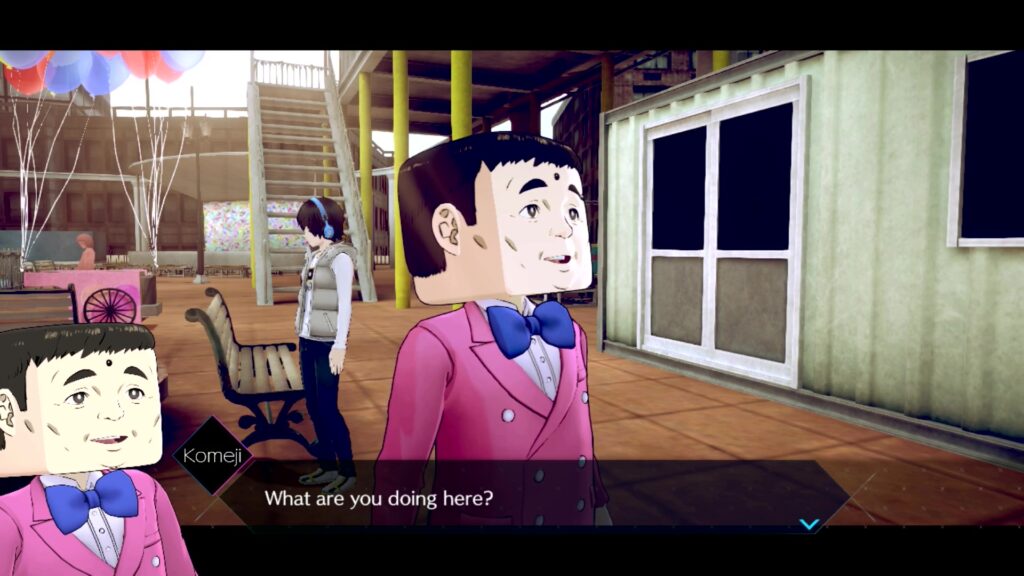
As for Shoma, he in many ways fulfils a similar role to Mizuki from the first AI: The Somnium Files — he’s a young character having to grow up well before his time, deal with some relatable and realistic issues (including outright trauma) and learn how to live life independently. He also has some notable relevance to the overall “big plot”, but that gets us well and truly into spoiler territory.
There’s plenty more which can be said about AI: The Somnium Files – Nirvana Initiative’s narrative, but as with the first game, the more blind you can go into this one the more enjoyable it is as a whole. The one thing I will say is that it’s quite pleasing how the entire narrative of this game feels like it’s an extension of one of the more bizarre plot threads in the original game — which might make you look at at least one of the original game’s characters in a slightly new way. But let’s leave it at that for now, and instead look a little at how the game actually plays.
Like the first AI: The Somnium Files, Nirvana Initiative unfolds as a Japanese-style adventure game with visual novel-style storytelling sequences. Again like the first game, these are delivered from a full 3D first-person perspective with fully animated cutscenes rather than simple stills, making it a highly accessible game to visual novel newcomers who perhaps aren’t accustomed to focusing almost exclusively on the text.
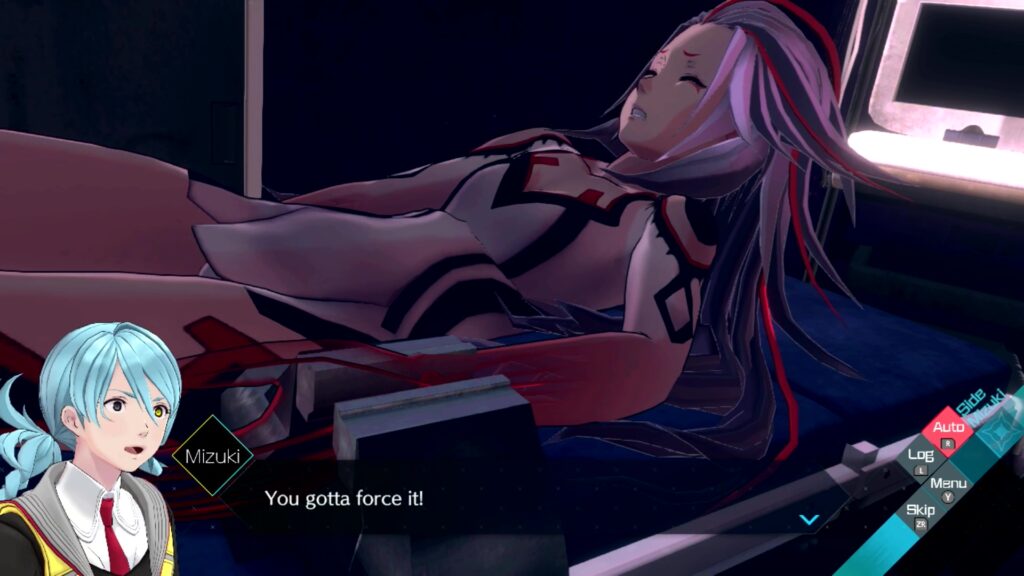
Notably, AI: The Somnium Files – Nirvana Initiative steps things up considerably with regard to the interactive components. As well as the time-limited Somnium investigation and puzzle sequences from the first game, Nirvana Initiative also introduces “VR investigation” sequences, providing a much greater feeling of depth to investigating crime scenes than in the original. More on those in a moment.
The Somnium sequences have had quite an overhaul compared to their previous incarnation. While mechanically speaking they are broadly similar — control either Ryuki’s AI Tama or Mizuki’s AI Aiba (whom she has taken possession of from Date), explore an environment, perform actions on interactive objects — there’s been a much greater effort to make each Somnium feel quite distinct in terms of what you’ll be doing.
Some are adventure game-style affairs similar to those found in the original game, but the most memorable are those where the basic mechanics are built upon to do something altogether different. One horror-style sequence includes plenty of running and hiding against tight time limits while attempting to accomplish your objectives; another rather unexpectedly features some lightweight RPG-style mechanics in a hilarious riff on Pokémon Go.
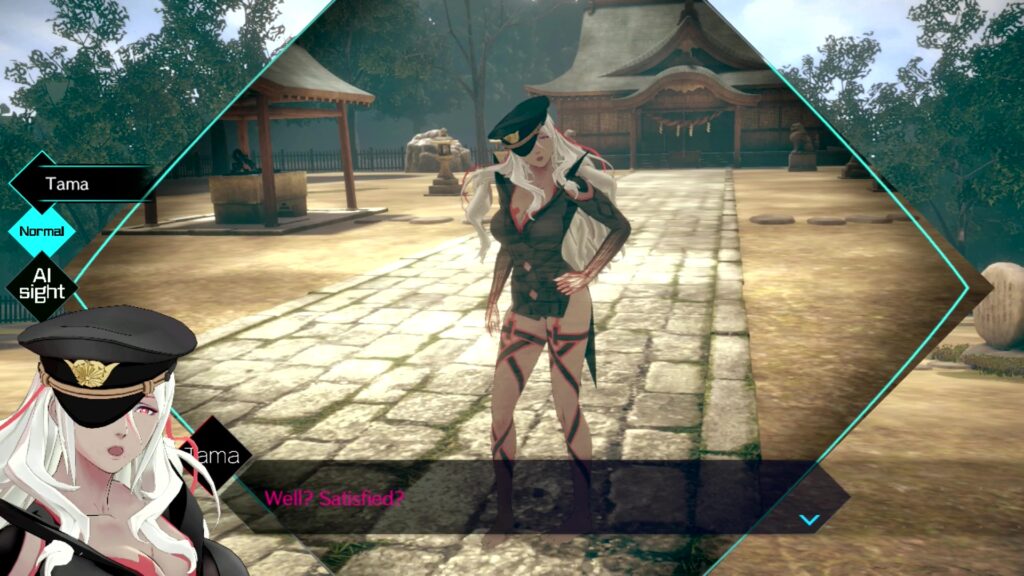
There are even some that come pretty close to full-on room escape sequences — and if you beat the game in its entirety (including its “secret” ending), you can even unlock an authentic recreation of 999’s opening sequence presented in the style of a Somnium. Plus if you beat all possible routes of a Somnium, you unlock the ability to play it without a time limit, allowing you to track down the last few hidden items and fill out the game’s gallery feature.
As for the VR investigation sequences, they’re somewhat similar to the Somnium sequences, only less surreal and a little simpler. At heart, they involve controlling Ryuki or Mizuki directly from a third-person perspective as they walk around a VR recreation of a crime scene scanned by Tama or Aiba. By doing this, they can investigate the scene thoroughly without disturbing the real scene at all, as well as making use of Tama and Aiba’s special vision modes such as X-Ray and Thermo to find hidden clues.
The goal in the VR investigation sequences is to find the important pieces of evidence scattered around the place, then use those pieces of evidence to piece together a re-enactment of what (probably) happened there. There are achievements on offer for successfully deducing each step of the re-enactment without making any mistakes, but otherwise there are no consequences for getting things “wrong” — it simply represents Ryuki and Mizuki considering all possibilities, no matter how unlikely or weird, often to the chagrin of their respective AI partners.
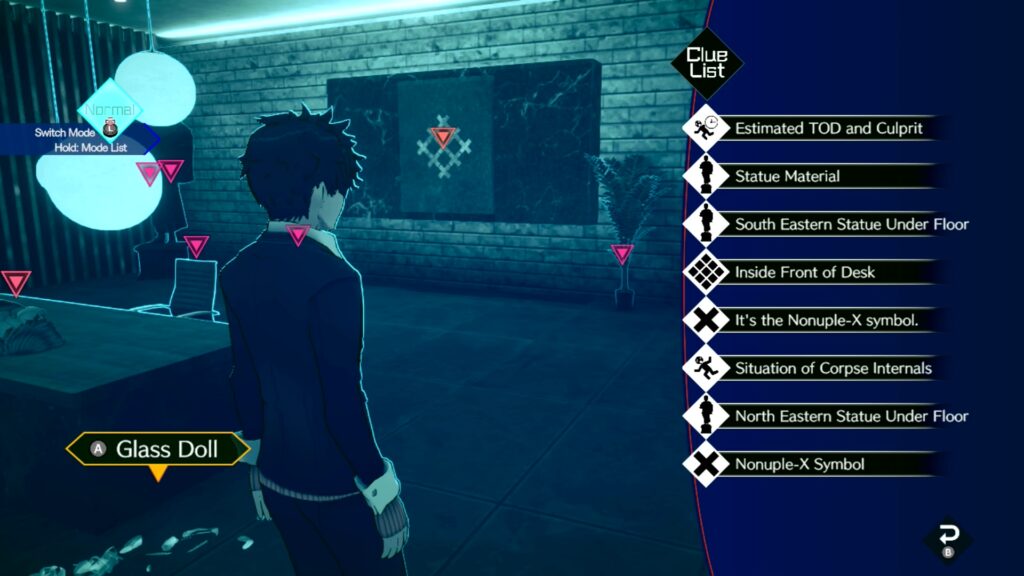
This simple addition makes the investigation scenes of AI: The Somnium Files – Nirvana Initiative feel much more involving than the simple point-and-click nature of the previous game; that’s not to say the previous game handled things badly at all, mind, rather that this is an obvious improvement that, like the game’s other interactive elements, might help to bring people from outside of the core visual novel audience more into the fold.
All in all, AI: The Somnium Files – Nirvana Initiative is a noticeable improvement on what was an already excellent game. The narrative is just as engaging, the characters are just as loveable, the single epic case that encompasses the entire game is full of some wonderful twists and turns — and, like its predecessor, the whole thing concludes with a delightful musical number. Plus, in true Uchikoshi tradition, the whole thing simply feels intelligent; while, like many of Uchikoshi’s other games, there are some fairly on-the-nose references to philosophical and religious concepts, these are handled well and make sense in the context of the game’s overall narrative — and no sign of Schrödinger’s cat this time around.
As previously noted, there’s actually no need to play the first AI: The Somnium Files before jumping into Nirvana Initiative thanks to its excellent spoiler-limiting option — you even have to prove you played the original by answering a couple of questions about its finale — but, having now played both in immediate succession, I highly recommend that you plough through both as one big project. This is an exceptionally well-realised narrative world filled with absolutely wonderful characters — and after a while, you won’t want to leave them behind.
Will we ever see them again, though? That remains to be seen — though given how well-received both games in the series have been so far, I wouldn’t be surprised to see another AI: The Somnium Files game in a year or two. Here’s hoping.
Join The Discussion
Rice Digital Discord
Rice Digital Twitter
Rice Digital Facebook
Or write us a letter for the Rice Digital Friday Letters Page by clicking here!
Disclosure: Some links in this article may be affiliate links, which means we may earn a small commission if you make a purchase after clicking on them. This is at no additional cost to you and helps support Rice Digital!
- Letter from the Editor: passing the torch - June 30, 2023
- Super Woden GP 2 is looking promising - June 30, 2023
- Inti Creates is making a 32 bit-style Love Live action platformer - June 26, 2023





